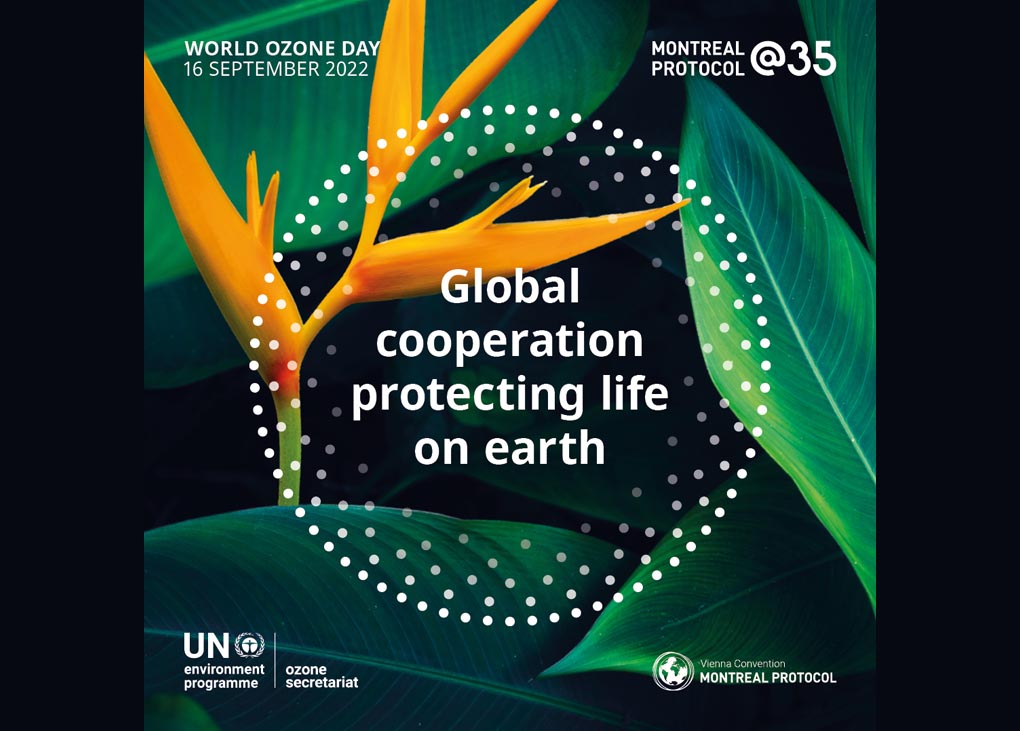World Ozone Day is being celebrated on September 16 with the theme “global cooperation protecting life on Earth”, in recognition of the 35th anniversary of the Montreal Protocol on Substances that Deplete the Ozone Layer.
On September 16, 1987, governments adopted the Montreal Protocol to control and reduce ozone-depleting substances, mainly chlorofluorocarbons (CFCs) and halons. The protocol came into effect in 1989. By 2008, it was the first and only UN environmental agreement to be ratified by every country in the world.
“In the face of a triple planetary crisis – climate change, nature loss and pollution – the Montreal Protocol is one of the best examples we have of the power of multilateralism,” says Meg Seki, Executive Secretary of the United Nations Environment Programme’s (UNEP’s) Ozone Secretariat. She notes how this success is reflected in the theme for this year’s event.
According to the UNEP Ozone Secretariat, the Montreal Protocol has protected millions of people from skin cancer and cataracts over the years. It has also slowed climate change. If ozone-depleting chemicals had not been banned, it is estimated that global temperatures would rise by an additional 2.5°C by the end of this century.
The HVAC&R industry has played a major role in phasing out the use of CFCs, as well as HCFCs, as refrigerants. Indeed, in the last financial year, Australia set a new record for destroying ozone-depleting refrigerant gases and removing them permanently from the ecosystem.
According to the Australian Refrigeration Council (ARC), the HVAC&R industry destroyed more than three times as much R22, one of the most common ozone-depleting refrigerant gases, as in any of the previous five years. More than 120 tonnes of R22 were recovered in 2020–21 and sent for destruction at the Refrigerant Reclaim Australia (RRA) plasma arc facility in Melbourne – the largest amount since it began to be reclaimed for re-use a decade ago.
By contrast, destruction rates of R22 in the previous five years ranged from 14 to 39 tonnes.
ARC chief executive officer Glenn Evans says this a testament to the efforts of the entire HVAC&R industry, and to the legislation and regulations that underpin the licensing scheme.
“This record coincides with the 35th anniversary of the Montreal Protocol on Substances that Deplete the Ozone Layer – a great achievement built on long years of dedicated effort,” he says.
“Australia enshrined the principles of the Montreal Protocol in legislation with the Ozone Protection and Synthetic Greenhouse Gas Management Act 1989 – one of the first countries to do so.
“The first targets to protect the ozone layer were the CFCs used in everything from aerosol cans to fridges and air conditioners, which were banned in 1996.
“After that, the RAC industry’s focus moved on to eliminating hydrochlorofluorocarbons (HCFCs) such as R22, and here we are today, closer than ever to that objective.”
More information about World Ozone Day is available at the UNEP Ozone Secretariat website.
A free Ozone Day webinar is being held on Saturday, September 17. For more information, click here.
 Mark Vender
Mark Vender


Leave a Reply